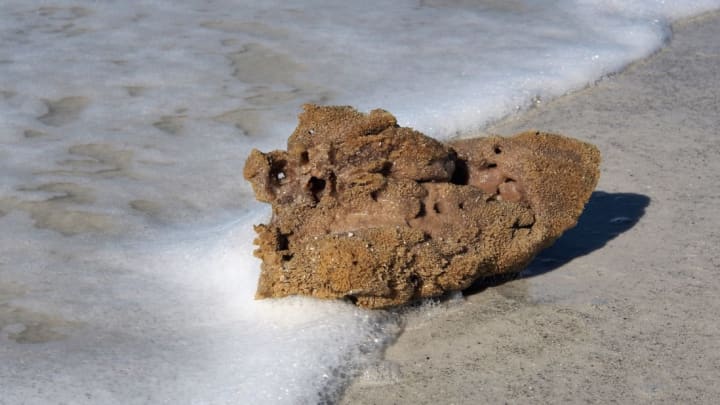The shores of northern France are normally a picturesque spot for a barefoot stroll. That was until mid-July of this year, when walking down the beach without stepping on a spongy, yellow blob became impossible. As Gizmodo reports, foam-like objects washed up by the tide have covered close to 20 miles of French coastline over the course of a few days.
Unlike the boulder-sized "fatbergs" sometimes found on the beaches of Britain or the snowballs that crowded Siberian beaches last November, the spongy invasion has no known source. Experts have ruled out both organic sponges found in the ocean and polyurethane foam made by people. Jonathan Hénicart, president of Sea-Mer, a French nonprofit that fights beach pollution, told La Voix du Nord, "When you touch it, it's a bit greasy. It's brittle but not easily crumbled. It has no specific odor […] We do not know if it's toxic [so] it should not be touched."
The northern coast of France borders the English Channel, a waterway that welcomes hundreds of commercial ships every day. Strange cargo is constantly falling overboard and washing up on shore. Since the sponges resemble nothing found in nature or an artificial material that's commonly known, it's possible they're a combination of both. They could be a type of foam, for instance, made out of seawater and air bound together with a substance like soap or fertilizer.
Experts won't be able to verify what the mess is made of until the Cedre Association, an organization that studies hydrocarbon pollution, analyzes samples collected from the beach. That process should take about a week. In the meantime, French officials are working to clear the coastline while assuring the public the phenomenon doesn't pose a threat to their health. Nonetheless, beachgoers in northern France should think twice before kicking off their flip-flops.
[h/t Gizmodo]
